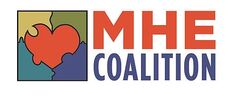Shoulder Girdle
The scapula is a fairly common site (40%) of involvement in MHE. The lesions may be located on the anterior or posterior aspect of the scapula. Anterior scapular lesions may lead to discomfort during scapulothoracic motion. Winging of the scapula due to exostoses has been described. Clavicle (collar bone) involvement has also been described (5% cases).
What is winging?
Diagnostic Procedures
Possible Treatment Options
What Parents Should Watch Out For
*Note from The MHE Coalition: Exostoses in the shoulder girdle (collarbone (clavicle) and shoulder blade can impact a child’s ability to raise his/her arm in class, write on a blackboard, participate in certain sports, or wear a backpack. In addition, adolescent girls (and women) may be unable to wear a bra because of pressure not only on shoulder girdle exostoses but also on rib exostoses.
What is winging?
- The scapula (also known as shoulder blade) is a triangular flat bone that is located in the upper back and takes part in forming the shoulder joint. The scapula usually lies flat on the chest wall without any prominence. Winging of the scapula is a phenomenon when a part of the scapula including the inferior angle becomes prominent either at rest or during movements. The two most common causes for this are
- Exostosis on the inner (chest wall) aspect of the scapula.
- Damage to the nerve (long thoracic) causing weakness or paralysis of muscles (serratus anterior) attached to the scapula.
Diagnostic Procedures
- The orthopedist will probably manually feel for exostoses along the outer aspect of the shoulder blade. Some limited areas of the inner aspect are amenable to clinical examination. Range and feel of the scapulothoracic motion is helpful in clinical assessment. It is important to check individual groups of scapular muscles to rule out nerve compression leading to winging of scapula. X-rays (including special tangential views of the scapula) or other imaging tests may be ordered.
Possible Treatment Options
- Both outer aspect lesions and inner ones may need excision in symptomatic cases. Smaller lesions on outer aspect amenable to clinical palpation may be observed with regular clinical follow-up.
What Parents Should Watch Out For
- Crunching or crackling sound when moving that area
- Pain
- Tingling, numbness
*Note from The MHE Coalition: Exostoses in the shoulder girdle (collarbone (clavicle) and shoulder blade can impact a child’s ability to raise his/her arm in class, write on a blackboard, participate in certain sports, or wear a backpack. In addition, adolescent girls (and women) may be unable to wear a bra because of pressure not only on shoulder girdle exostoses but also on rib exostoses.
